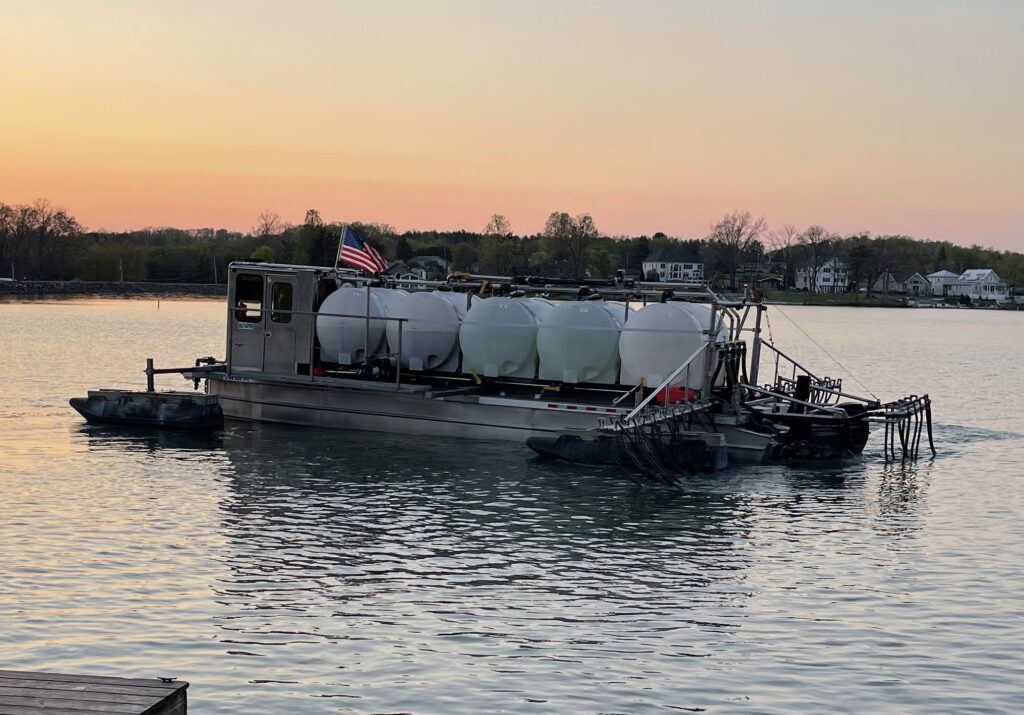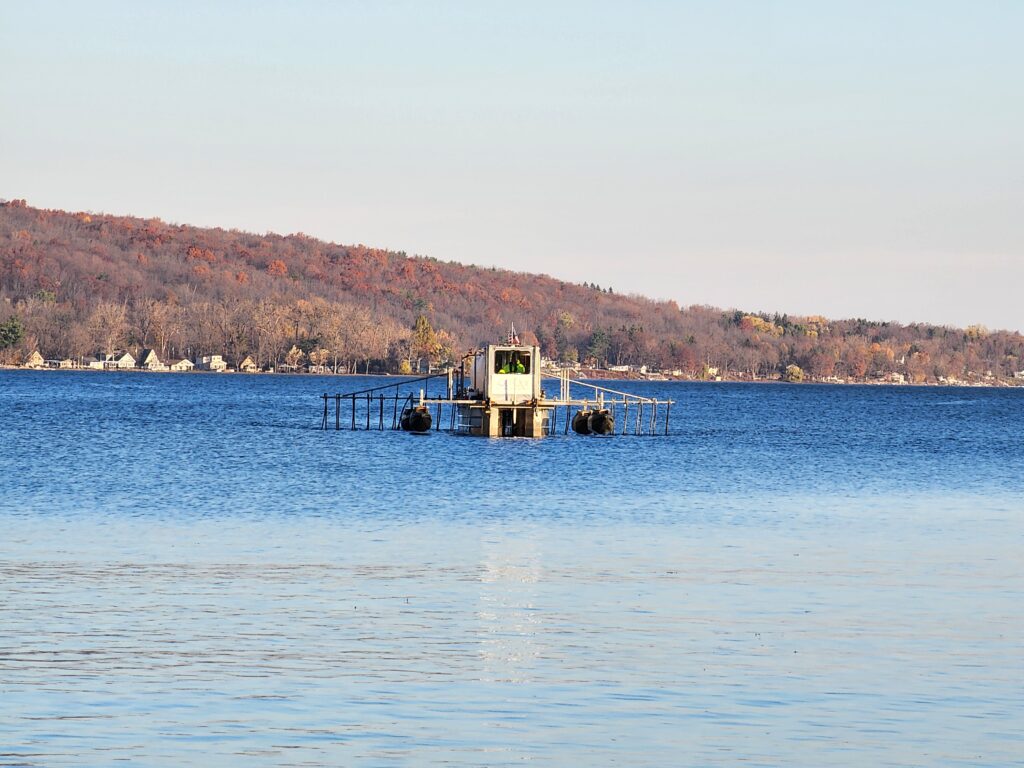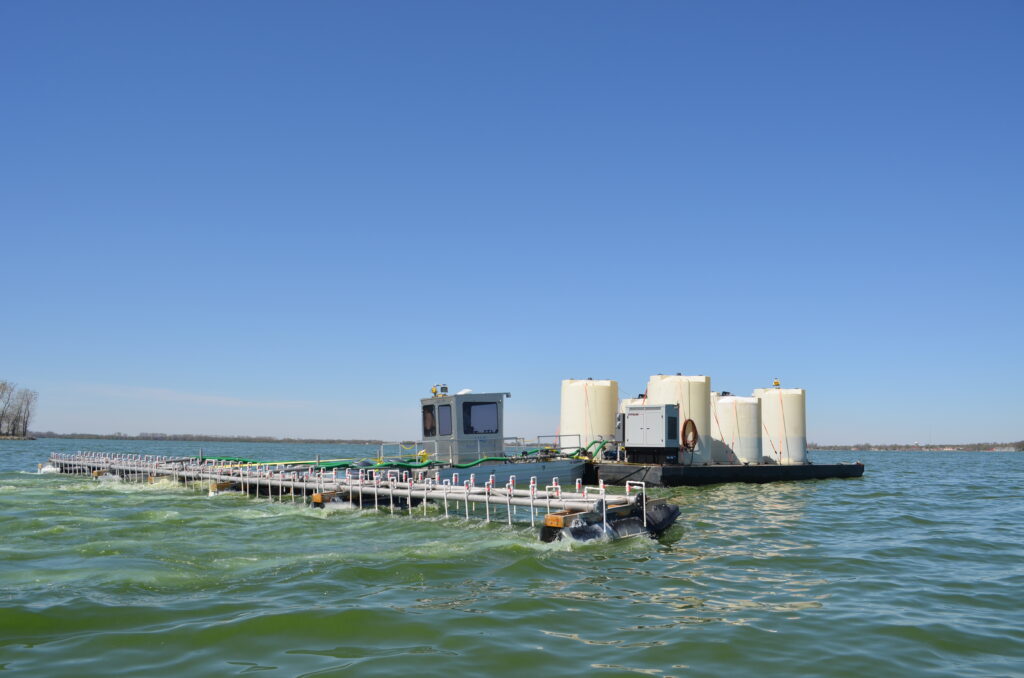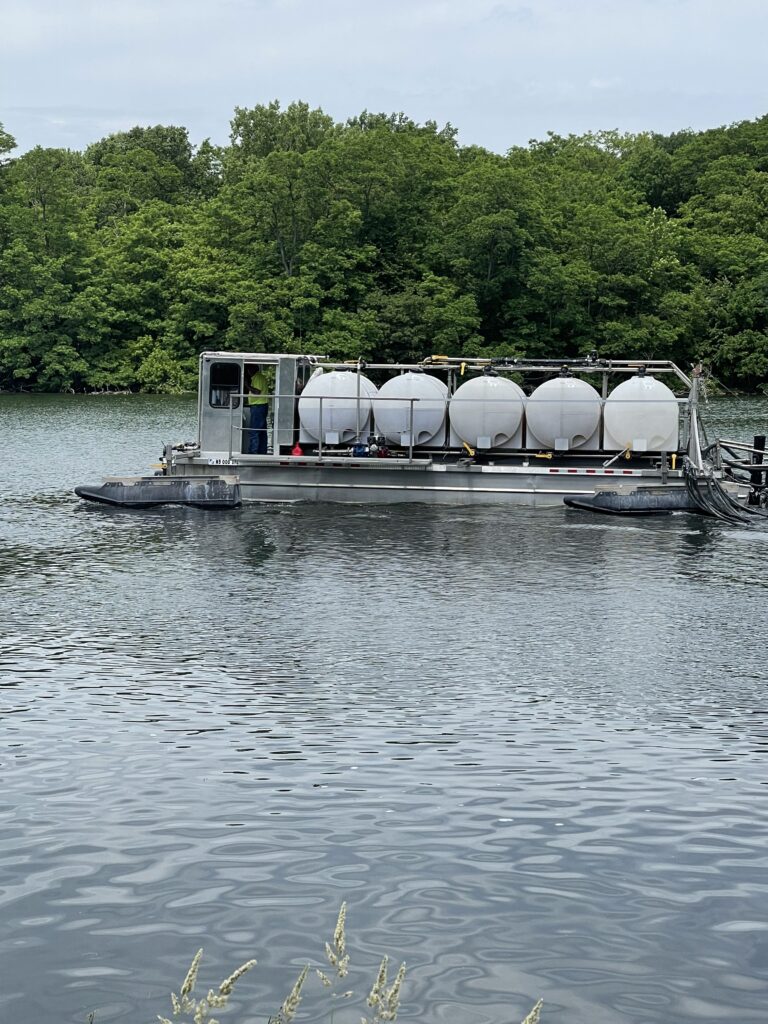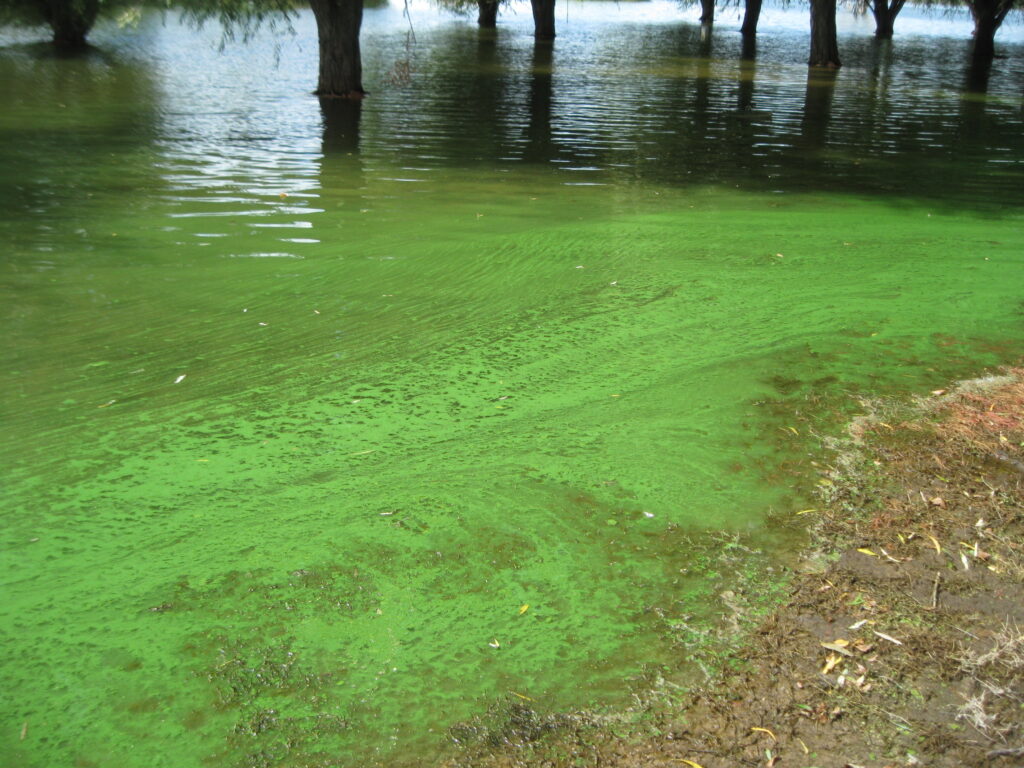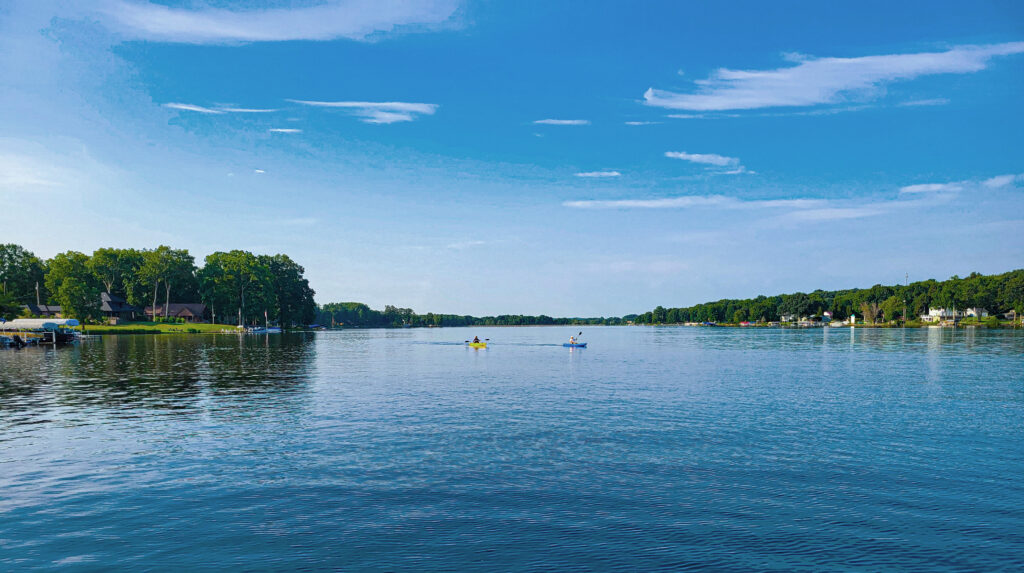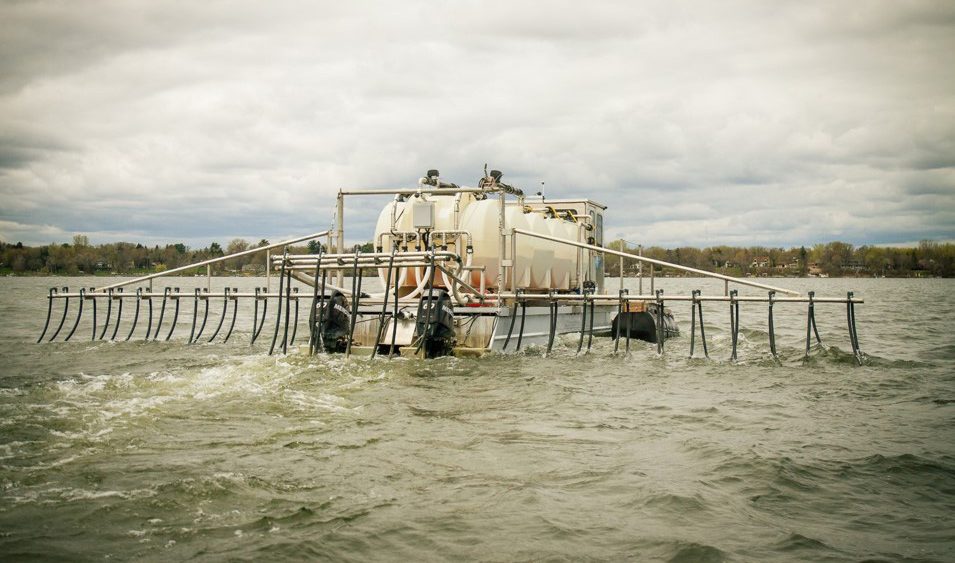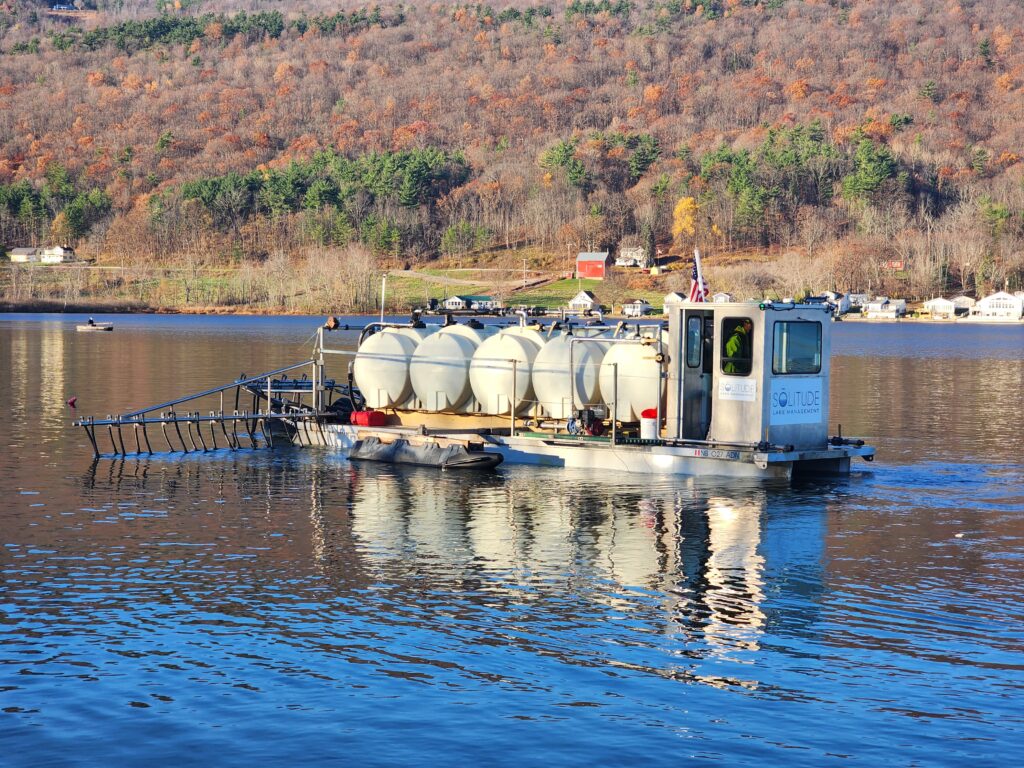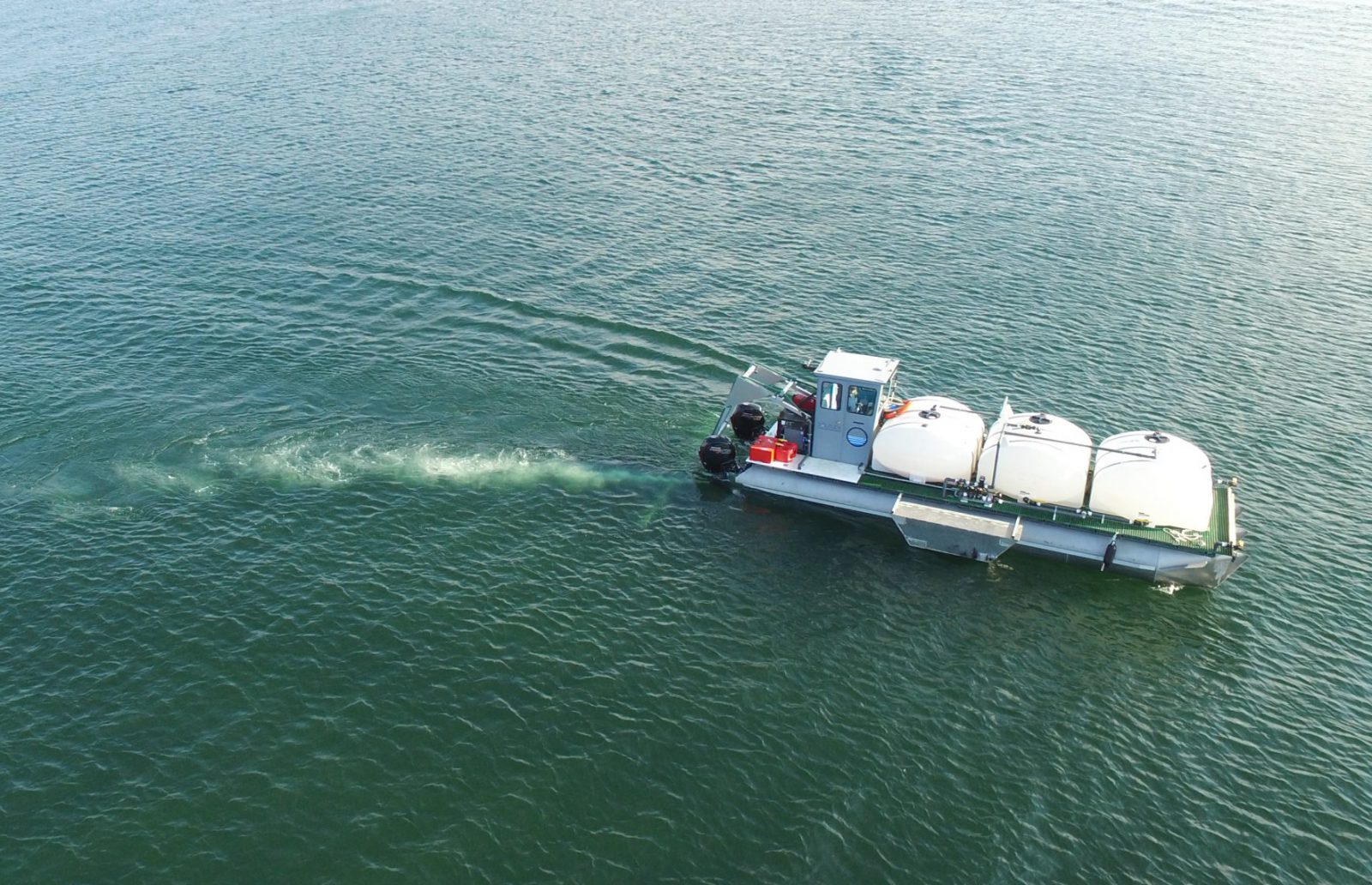
Alum Applications | Case Studies and Success Stories
The proper balance of nutrients like phosphorous and nitrogen is vital to the health of your lake or pond. However, high levels of these nutrients can threaten the health and overall aesthetics of the aquatic ecosystem. Our lake and pond management professionals can help control nutrient levels and restore your waterbody through phosphorus-locking technologies like Alum.
Below are case studies highlighting a few of our success stories involving alum applications.
Alum Application Leads to Removal from "Impaired" Water List | Maple Grove, MN
Fish Lake is a 232-acre recreational lake in Maple Grove, MN, that had poor water quality due to elevated phosphorus levels which drove excessive algal growth. Discover how our effective alum applications not only restored this lake’s water quality, but led to its removal from the “impaired” water list.
Improving Water Quality & Clarity In Recreational Lake | Fremont, NE
Lake Leba is a 213-acre recreational lake located along the Platte River near Fremont, NE, that was suffering from excess phosphorus levels due to flooding from a nearby river. Discover how our team drastically improved water clarity and reduced phosphorus levels with alum.
Restoring Water Quality In 13,500-acre Drinking Water Reservoir | Ohio
Grand Lake St. Marys is a large 13,500-acre drinking water reservoir located in west central Ohio. This lake had high levels of phosphorus which led to the growth of cyanobacteria algae. Discover how our team completed the world’s second-largest alum application and enhanced the drinking water for this Ohio community.
Water Quality Improvements in State Recreational Lake | Fremont, NE
A 50-acre lake in Fremont, NE, had a long history of toxic algal blooms ruining summertime recreational activities. After years of struggling with poor water quality and clarity, alum applications were implemented to help balance excess phosphorus levels. Explore how our team achieved dramatic water quality improvements.
Managing Toxic Algae in Recreational Lake | Watsonville, CA
Pinto Lake is a 120-acre recreational lake in Watsonville, CA. This popular lake is often used by residents to fish, swim, boat, and kayak. Unfortunately, nutrient pollution and warm temperatures cause the lake to develop poor water quality. Discover how we restored water quality with alum.
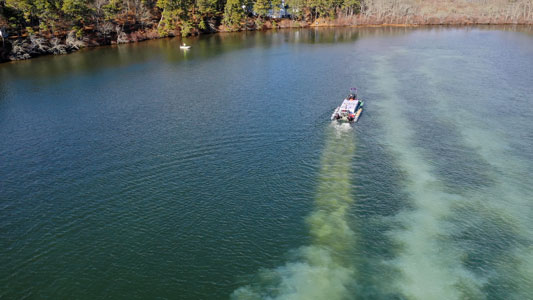
Restoring Water Quality in 54-Acre Pond | Ryegate, VT
The pond is a 54-acre waterbody with a maximum depth of 46-feet and an average depth of 16-feet. The pond provides valuable fish & wildlife habitat as well as recreational opportunities for area residents, however, there is a long history of nuisance algae blooms and associated water quality impairments…
Restoring Water Quality in Recreational Lake | Nebraska
This popular lake had elevated phosphorus levels which resulted in cyanobacteria (blue-green algae) blooms and subsequent algae toxin production. This caused many concerns for residents and government leaders as toxic algae can threaten the health of aquatic life, pets, wildlife, and humans. Discover how alum helped restore water quality in this recreational lake.
Utilizing Alum to Improve Water Clarity | White Bear Lake, MN
A 1,071-acre lake in Minnesota was declared as an impaired waterbody due to excess phosphorus levels. Discover how SOLitude’s alum experts were able to restore the lake’s water quality and improve water clarity with all-natural alum applications.
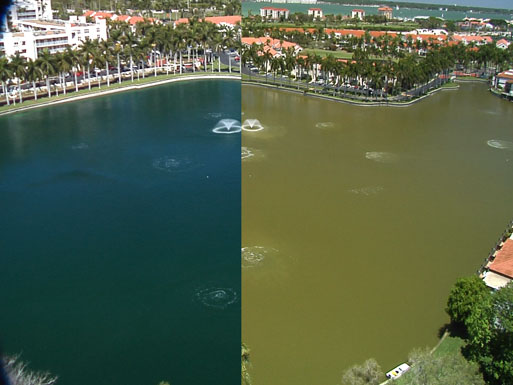
Restoring Water Quality at Lake Lake | St. Petersburg, FL
This property is a 14-acre lake located in St. Petersburg, on the western coast of Florida. In January 2012, the HOA contacted SOLitude Lake Management to request assistance with multiple lake issues including bad odors, dead fish and other wildlife, and green murky water. The following is a summary of the initial evaluation, execution of the management plan and ecological restoration of the lake over an 11-month period…
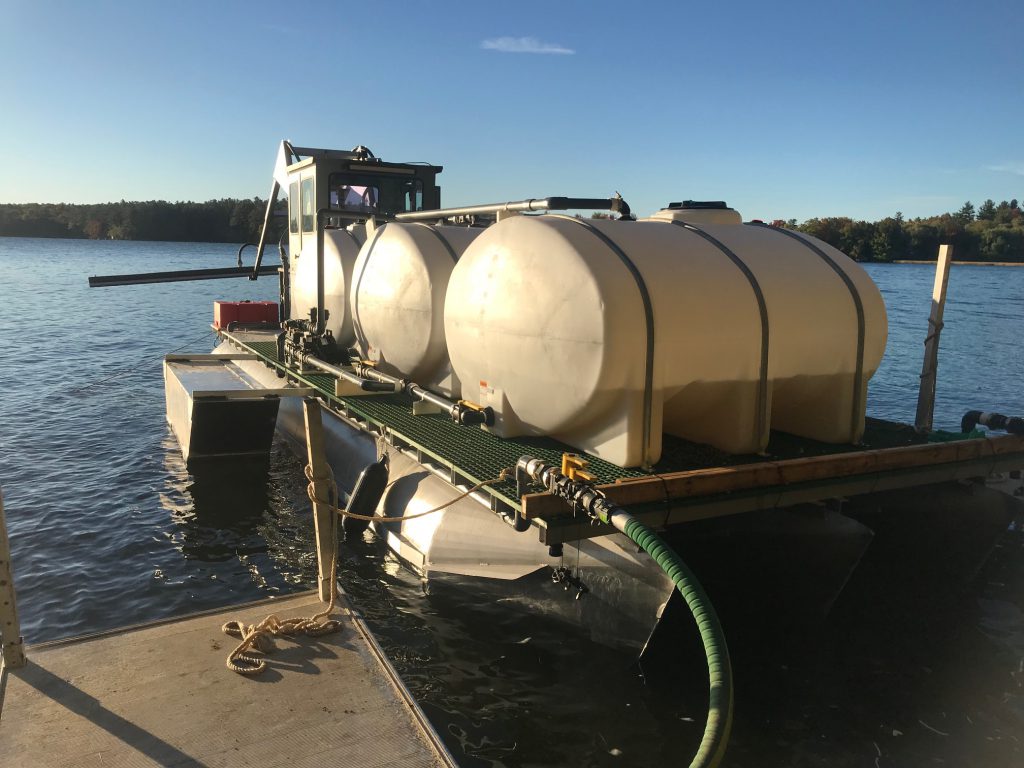
Controlling Toxic Algae in Drinking Water Reservoir | Auburn, ME
A large lake located in Auburn, ME, is used for recreational fishing and boating and is highly valued as the water supply source for several nearby cities. This lake covers an area of 2,261 acres, has a mean depth of 36 feet and a maximum depth of 118 feet. These features make the lake an ideal coldwater fishery and an excellent water source for a sizeable metropolitan area…
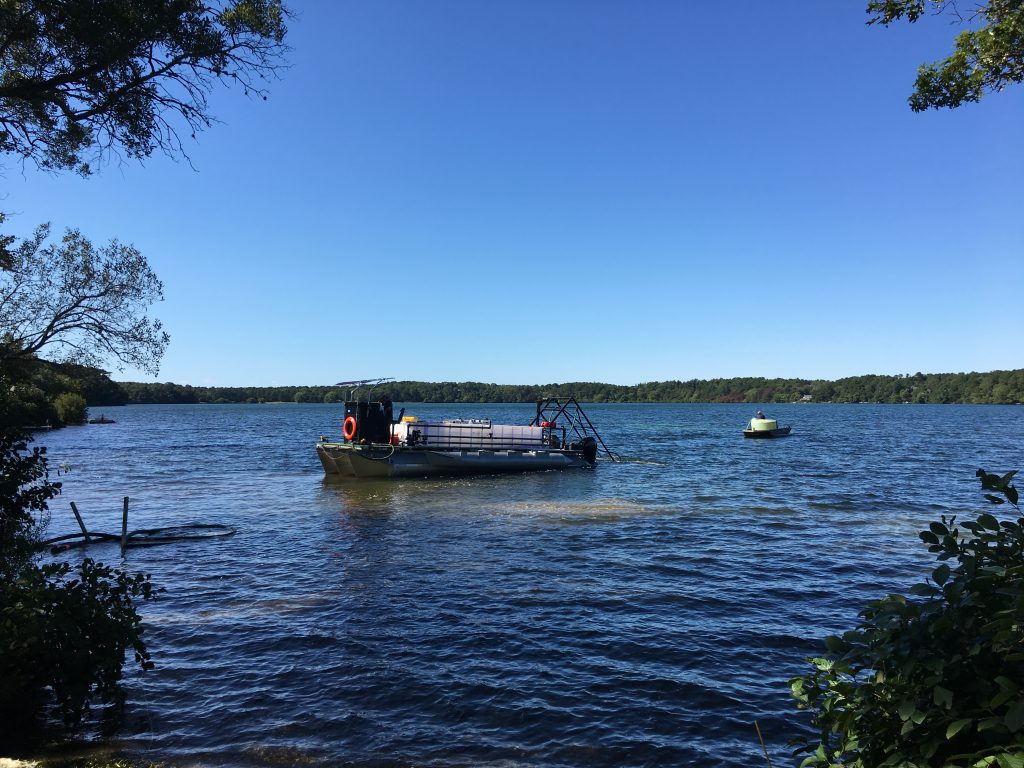
Mitigating HABs with Alum Application | Harwich, MA
Located in Harwich, MA, this waterbody serves as an ecological, agricultural, and recreational asset to the area. This 174-acre kettle pond is unlike many in the Cape Cod region. It’s relatively shallow in comparison to others, boasting a maximum depth of 28 ft and a mean depth of 13 ft. This pond has supported cranberry farming for roughly 150 years and is an important spawning habitat for Alewife (a small fish species that migrates between fresh and saltwater)…
Fixing Water Quality Issues with Alum | Star Prairie, WI
Cedar Lake is a 1,118-acre recreational lake near Star Prairie, WI, where residents could boat, swim, and fish until the water quality started to decline. Before our application in 2017, Cedar Lake had been on the Wisconsin list of impaired waters since 1998 because of high total phosphorus levels. See how our experts utilized alum to restore water quality for these citizens.








